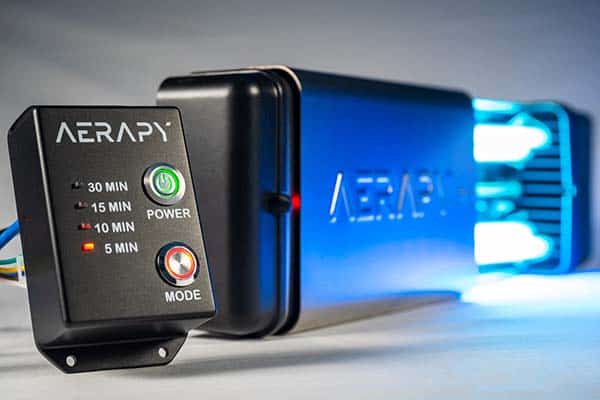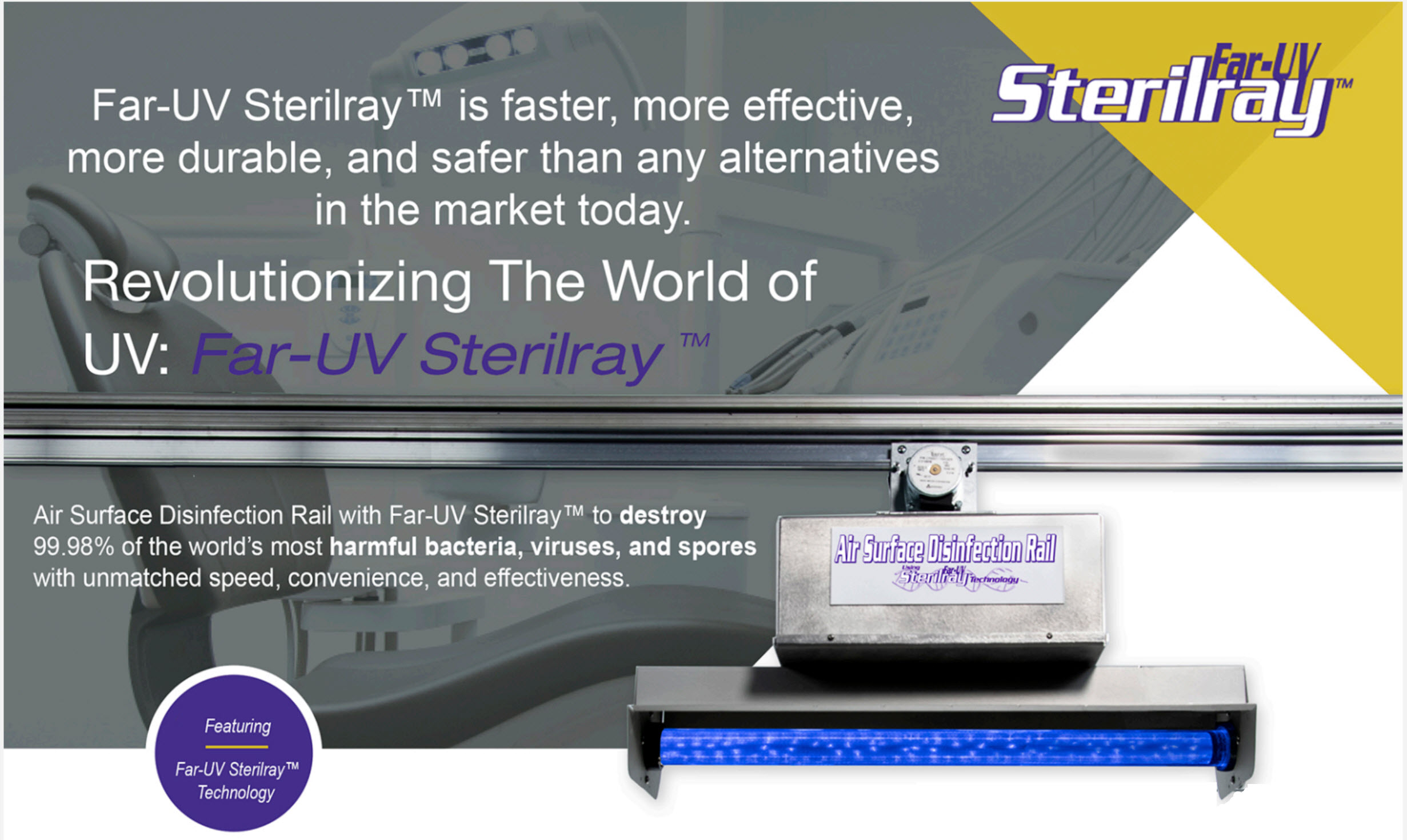Exploring the Perks of Far UVC Light: Transforming Indoor Air Top Quality
One such option that has actually gotten interest is Far UVC light. How exactly does Far UVC light job? In this conversation, we will certainly check out the interesting world of Far UVC light and reveal its possibility in changing the method we safeguard our indoor settings.
Just How Far UVC Light Works
Far UVC light works by sending out short-wavelength ultraviolet light that has the ability to pass through and suspend bacteria. Unlike conventional UV light, which can be damaging to human skin and eyes, much UVC light has a shorter wavelength that is soaked up by the external layers of human skin, preventing it from getting to the underlying living cells. This makes it a secure and efficient alternative for constant disinfection in busy areas.
When much UVC light is produced, it connects with the DNA and RNA of microbes, including viruses and bacteria, interrupting their capability to replicate and causing them to end up being inactive. The high power of the short-wavelength light damages the molecular structure of the hereditary material, protecting against the microbes from spreading and recreating.

Furthermore, far UVC light can be conveniently integrated into existing illumination fixtures, making it an affordable option for a large range of applications, including health care centers, colleges, workplaces, and public transportation. Its capability to constantly decontaminate occupied spaces without positioning a risk to human health makes far UVC light an appealing innovation in the area of indoor air high quality administration.
Much UVC Light's Influence on Airborne Pathogens
The influence of much UVC light on air-borne virus is significant in lowering the transmission of transmittable diseases and enhancing indoor air high quality. Far UVC light refers to a particular variety of ultraviolet light that has a wavelength between 207 and 222 nanometers. Unlike traditional UVC light, which is dangerous to human skin and eyes, much UVC light has been located to be secure for human beings while still working versus virus.
Research studies have shown that far UVC light has the ability to inactivate a vast array of air-borne viruses, including the influenza infection and the coronavirus (far-uvc). These virus are sent through respiratory system beads, and by making use of far UVC light, it is possible to reduce their stability and stop their spread
One of the essential advantages of using far UVC light is its capacity to get to all areas of a room. Unlike various other sanitation techniques that may have restricted reach, far UVC light can be installed in overhead lights components, making sure that the entire room is treated. This makes it particularly reliable in congested areas such as hospitals, colleges, and public transport.
Additionally, much UVC light can be utilized continuously without presenting a risk to human wellness. It can be executed as component of a detailed technique to boost indoor air top quality by minimizing the concentration of air-borne pathogens. By integrating much UVC light into existing air flow systems, it is possible to produce much safer and healthier interior settings.
Health Conveniences of Far UVC Light
Utilizing far UVC light provides various health advantages, making it a valuable tool view it in advertising public health and security. Much UVC light has been located to effectively kill air-borne virus, such visit this site as germs and infections, without hurting human skin or eyes. This makes it a perfect option for decontaminating interior settings and decreasing the danger of infections.
Among the vital health benefits of far UVC light is its capacity to battle the spread of airborne conditions. Researches have actually shown that far UVC light can efficiently suspend infections like flu and consumption. By mounting much UVC lighting fixtures in public spaces, such as colleges, workplaces, and hospitals, the transmission of these diseases can be considerably minimized.
Moreover, much UVC light has actually been located to be risk-free for constant exposure, as it does not cause skin damage or increase the threat of skin cancer cells. This is because of the truth that far UVC light has a limited series of infiltration in human skin, preventing any injury to much deeper layers.
In addition to its direct effect on airborne virus, much UVC light can additionally have indirect health and wellness benefits. By decreasing the presence of harmful microbes airborne, it can enhance indoor air quality, leading to a decline in respiratory system signs and allergies.
Much UVC Light's Duty in Minimizing Allergens

Much UVC light, with its wavelength in the series of 207 to 222 nanometers, has actually been verified to be effective in inactivating fungi, germs, and viruses. Current research studies have actually also shown that it can effectively decrease the visibility of allergens in indoor areas. When much UVC light is discharged, it communicates with the DNA and RNA of microbes, damaging their genetic material and stopping their duplication.
Far UVC Light's Prospective in Public Spaces
With its tried and tested effectiveness in decreasing irritants and suspending microorganisms, more information far UVC light holds great prospective for application in public areas. Public rooms, such as health centers, flight terminals, offices, and institutions, are frequently crowded and susceptible to the spread of airborne conditions. Incorporating much UVC light modern technology in these locations can dramatically boost interior air top quality and lower the transmission of harmful pathogens.
One promising application of much UVC light in public spaces is in air flow systems - far-uvc. By mounting much UVC lights in a/c systems, the modern technology can sanitize the air as it distributes, successfully minimizing the concentration of airborne infections and bacteria. This strategy can help avoid the spread of illness such as influenza, covid-19, and consumption, advertising a much healthier and safer environment for occupants
Additionally, far UVC light can be utilized in the sanitation of frequently touched surface areas. High-touch locations in public spaces, such as doorknobs, hand rails, and elevator buttons, can nurture a wide variety of microorganisms. By strategically positioning far UVC lights in these areas, the technology can continually sanitize surface areas, minimizing the risk of contamination and transmission.
Furthermore, using far UVC light in public areas is safe for human exposure. Unlike standard UVC light, which can be hazardous to human skin and eyes, far UVC light has been shown to be safe and risk-free for constant procedure in busy rooms. This makes it an ideal solution for enhancing indoor air high quality without presenting any type of health and wellness dangers to individuals.
Final Thought

Far UVC light functions by sending out short-wavelength ultraviolet light that has the capability to pass through and inactivate microbes. Unlike conventional UV light, which can be harmful to human skin and eyes, far UVC light has a much shorter wavelength that is absorbed by the outer layers of human skin, stopping it from reaching the underlying living cells. Far UVC light refers to a particular array of ultraviolet light that has a wavelength between 207 and 222 nanometers. Unlike conventional UVC light, which is harmful to human skin and eyes, far UVC light has actually been found to be secure for human beings while still being effective versus microorganisms.
Unlike traditional UVC light, which can be hazardous to human skin and eyes, much UVC light has actually been proven to be non-toxic and secure for constant procedure in busy spaces.